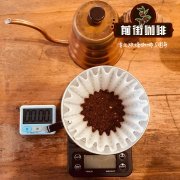Mexican Coffee Organic Coffee Bean Variety Mexican Chiapas Coffee treatment graded Flavor

Professional coffee knowledge exchange more coffee bean information please follow the coffee workshop (Wechat official account cafe_style)
Mexican coffee Chiapas coffee beans
Country: Mexico
Producing area: Chiapas Plateau
Rating: Altura
Producer: OPCAAC Organic small Farmers production Organization
Treatment: traditional washing
Variety: Kaddura (Caturra)
Altitude: 900m to 1100 m
Harvest time: October of each year to March of the following year
Chiapas is located in the southernmost part of Mexico, the coffee beans bred by the high altitude of 2500m to 4000m and fertile volcanic soil have a smooth taste and moderate acidity, and have won the UTZ "good Coffee Certification". Mexican coffee is mild and full of delicate aroma, with mild acidity on the palate, creamy silky and smooth, with a finish of drupes, nuts and spices.
Mexico is one of the largest producers of organic certified coffee. OPCAAC (Organic small Farmers' production Organization) was founded in 1995, which constructs a farm management system, emphasizes the open and transparent independent production and marketing information of coffee farmers, and sets standards to avoid over-exploitation of land. OPCAAC aims to create the value of the local coffee industry and improve the quality of life of local farmers through fair trade and eco-friendly agricultural production. OPCAAC members use environmentally friendly farming methods to reclaim land, establish sustainable economic and social management and improve the quality of their products through the development of regional organizations.
Founded in 1983, the Mahoma Cooperative La Union Majomut, located in the highlands of Chiapas province, is a group of small coffee farmers to promote the survival and livelihood of indigenous Indians, mainly Tzotzil indigenous Tzeltal.
The organization has 1450 members and is divided into 25 communities, with an average area of coffee grown per household of only two hectares, including corn and soybeans. Coffee is the main source of income for these aboriginal families. The coffee produced by the Mahoma Cooperative for farmers is processed and sold directly to foreign traders without being exploited by traditional traders.
Mexican coffee began to be grown in the 1960s, starting with the traditional method of growing farmers' crops (fertilizing and burning mountains). It was converted to organic farming in 1992 and was certified as organic in 1995. Cooperative
The work includes: organic planting training for community members, teaching and consultation on various matters of coffee work at all stages. The use of organic farming avoids the crisis of low prices and obtains quality recognition in the international market. Mahouma Cooperative also provides financial support to farmers, "educational work, family environment improvement," community participation and family sideline training. . The raw beans of our cooperative are highly recommended by the Fair trade Fair Trade Organization.
Country: Mexico
Producing area: Chiapas Chiapas Plateau
Marked: La Union Majomut
Variety: Caturra grade: SHG treatment: washing, fermentation, natural sun exposure
Harvest time: at the end of April 2005, disadvantages of appearance: green, 0d/350g
Dry fragrance: sweet spices, creamy fragrance, rich oil fragrance
Wet fragrance: flower, blackcurrant, red jujube, tea
Sipping: delicate sour, obvious greasy, sweet and changeable, sour citrus, sour grapefruit, sweet spices, East African spices, bitter sweet red wine after swallowing, sweet and sour aftertaste of berries
Important Notice :
前街咖啡 FrontStreet Coffee has moved to new addredd:
FrontStreet Coffee Address: 315,Donghua East Road,GuangZhou
Tel:020 38364473
- Prev

How to determine the extraction time of hand-made coffee? How to control the time of making coffee?
When it comes to making hand-brewed coffee, it is often said that we should pay attention to the water temperature, grinding, powder-to-water ratio, and techniques, and seldom take the extraction time seriously. I think the timing is only a rough estimate, mainly depending on the duration of steaming. In fact, the extraction time in hand-brewed coffee is also very important! The longer the extraction time, the stronger the flavor, the higher the concentration, and the clearer the sour, sweet and bitter feeling.
- Next

Jamaican Coffee grading method what grade of Jamaican coffee is a good Blue Mountain coffee
For more information on coffee beans, please pay attention to the coffee workshop (Wechat official account cafe_style). According to the law, only beans from the Central Blue Mountains area of Jamaican coffee can be called Blue Mountain Coffee. High-quality Blue Mountain Coffee is divided into three grades: No. 1 (over 17018), No. 2 (16), and No. 3 (15), which is equivalent to 1764 inches in size.
Related
- Beginners will see the "Coffee pull flower" guide!
- What is the difference between ice blog purified milk and ordinary milk coffee?
- Why is the Philippines the largest producer of crops in Liberia?
- For coffee extraction, should the fine powder be retained?
- How does extracted espresso fill pressed powder? How much strength does it take to press the powder?
- How to make jasmine cold extract coffee? Is the jasmine + latte good?
- Will this little toy really make the coffee taste better? How does Lily Drip affect coffee extraction?
- Will the action of slapping the filter cup also affect coffee extraction?
- What's the difference between powder-to-water ratio and powder-to-liquid ratio?
- What is the Ethiopian local species? What does it have to do with Heirloom native species?

